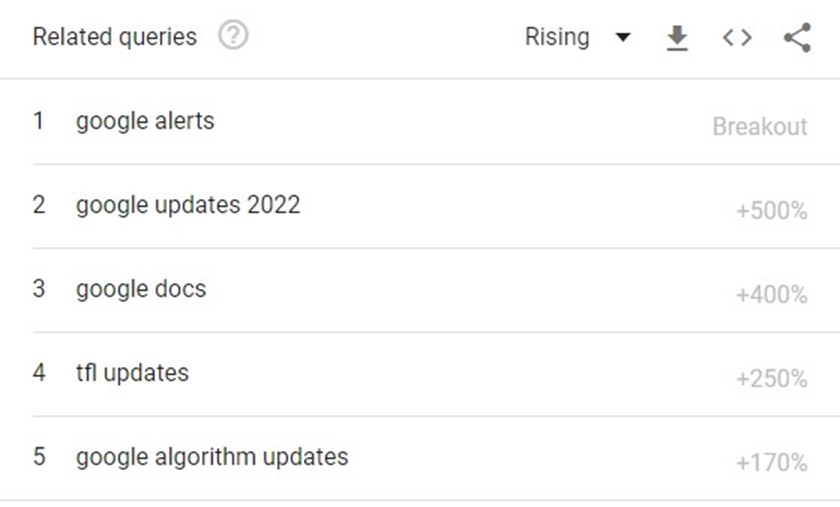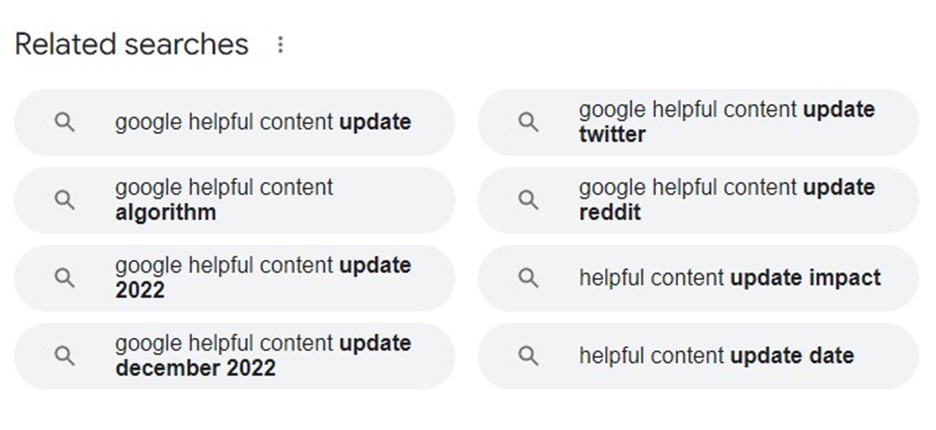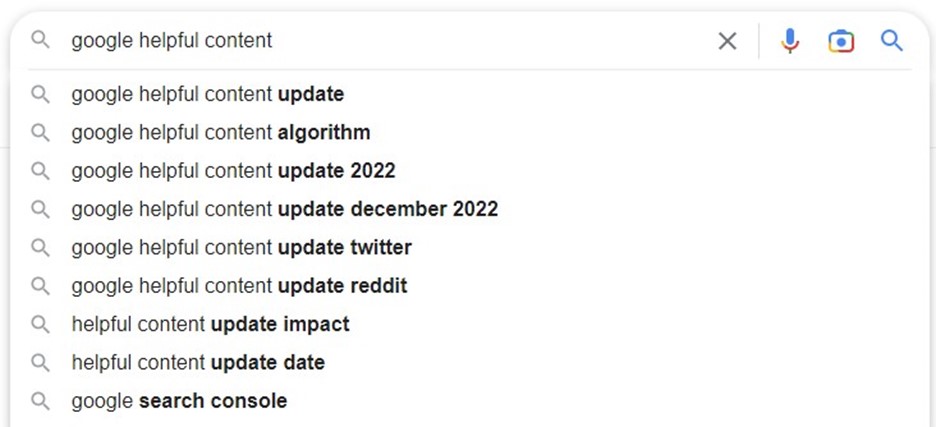In the ever-evolving world of SEO, staying ahead requires not just awareness but actionable strategies. Let’s dive deeper into each section of SEO trends for 2024, providing you with detailed insights and hands-on techniques to elevate your online presence.
Understanding the historical evolution of SEO is crucial for devising effective strategies that align with the ever-changing digital landscape. From its early days of simple keyword matching in the 1990s, SEO has undergone a remarkable transformation. The strategies have evolved beyond keyword reliance, now encompassing intricate algorithms that prioritize elements such as user intent, mobile optimization, and overall site usability.
This section delves into the journey of SEO, highlighting the shift towards a more sophisticated approach that adapts to the nuanced requirements of modern search engines.
Actionable Tip: Conduct a comprehensive audit of your website’s historical SEO strategies.
How-To: Identify outdated practices and update your approach to align with modern SEO requirements.
Recognizing the pivotal importance of staying informed, this section delves into the compelling reasons behind the need to keep abreast of SEO trends. From effectively navigating algorithm changes and outpacing competitors in the dynamic digital landscape to prioritizing enhanced user experience and adapting to evolving user behavior, staying updated is indispensable. This proactive approach ensures not only a competitive edge but also sets the foundation for driving sustained business growth in the ever-evolving realm of SEO.
Actionable Tip: Set up Google Alerts for industry-specific keywords.
How-To: Regularly review alerts to stay updated on the latest news and trends in your niche.
Recognizing that technical SEO serves as the backbone of your overall strategy, this section delves into key technical aspects for 2024. Explore imperative facets such as voice search compatibility, the significance of mobile-first indexing, enhancing user experience, and the crucial role of establishing expertise, authoritativeness, and trustworthiness (E-A-T) to foster authority and credibility. Unveiling the technical intricacies aligns your approach with contemporary SEO requirements, ensuring a foundation that optimally supports success in the evolving digital landscape.
Actionable Tip: Conduct a mobile-friendliness test using Google’s Mobile-Friendly Test tool.
How-To: Make necessary adjustments to ensure your site is mobile-friendly, considering factors like responsive design and fast loading times.
Delving into the foundational elements of SEO, this section explores the evolving landscape with a specific focus on two crucial trends: the ascent of interactive content and the emergence of zero search volume (ZSV) keywords. The exploration sheds light on these transformative trends, challenging conventional approaches to keyword targeting and paving the way for innovative strategies in the ever-evolving realm of search engine optimization.
Actionable Tip: Incorporate interactive elements like quizzes or polls in your content.
How-To: Use tools like Typeform or PollDaddy to create engaging interactive content and track user responses.
Unveiling the transformative potential of AI and Machine Learning on SEO strategies, this section delves into the multifaceted impact of these technologies. Explore their role in providing in-depth keyword insights, reshaping content creation processes, optimizing on-page elements, and enhancing overall user experience. Understanding how to harness the power of AI and ML becomes imperative for navigating the dynamic search landscape, ensuring your SEO approach aligns seamlessly with the advancements in technology and user expectations.
Actionable Tip: Explore AI-driven content creation tools like OpenAI’s GPT-3.
How-To: Experiment with AI-generated content for blog intros or social media posts and measure audience engagement.
Recognizing the central role of user experience and engagement in achieving SEO success, this section delves into key trends that contribute to enhancing UX. Explore the significance of visual appeal in content, the importance of intuitive navigation, the strategic use of compelling calls to action, and the integration of user testing and feedback. These trends form a cohesive strategy, creating a positive feedback loop that not only improves the overall user experience but also positively influences SEO rankings in a dynamic and competitive digital landscape.
Actionable Tip: Conduct A/B testing on your website’s call-to-action buttons.
How-To: Analyze user interactions and tweak button design, placement, or wording based on the more successful variation.
Customizing your SEO strategies for both local and international success is crucial. In this section, gain insights into optimizing Google Business Profiles, maintaining a well-optimized website, and adapting to the evolving landscape with the rise of voice search, the dominance of video content, and the critical role of online reputation management. Tailoring your approach to the specific nuances of local and global audiences ensures a comprehensive strategy that aligns with the diverse requirements of different markets, optimizing your digital presence for maximum impact and visibility.
Actionable Tip: Optimize your Google My Business profile with accurate information.
How-To: Regularly update business hours, add fresh content, and encourage positive reviews to enhance local SEO.
Embarking on ethical link-building practices requires a comprehensive understanding of key trends that take center stage. This section emphasizes the critical components of ethical link-building, placing a significant focus on prioritizing quality over quantity. Explore the transformative impact of AI in streamlining processes, the adherence to user experience standards, the strategic approach to brand building, the integration of personalization, and the significance of maintaining diverse backlink profiles. Implementing these ethical link-building strategies ensures not only compliance with industry best practices but also sets the foundation for building sustainable and authoritative online presence.
Actionable Tip: Identify reputable websites in your industry for potential collaboration.
How-To: Reach out to these sites with a personalized pitch, emphasizing the mutual benefits of linking to each other’s content.
Pro Tip: Monitor your backlink profile regularly using tools like Majestic or Ahrefs to ensure ethical practices and avoid association with spammy or low-quality sites.
Empowering your SEO strategy requires staying ahead with cutting-edge tools. In this section, discover the potential of keyword research platforms, leverage the capabilities of on-page SEO plugins, harness the insights from backlink analysis tools, and utilize analytics platforms. These tools are invaluable, providing actionable insights and optimizing your website’s performance to seamlessly align with the latest SEO practices. Understanding how to effectively utilize these tools positions your strategy at the forefront of the evolving digital landscape, ensuring a competitive edge and sustained success in the dynamic realm of search engine optimization.
Actionable Tip: Explore the features of on-page SEO plugins like Yoast SEO.
How-To: Implement suggestions made by the plugin to optimize individual pages for search engines.
Pro Tip: Regularly update your SEO tools and stay informed about new features and functionalities they introduce to stay ahead of the curve.
Anticipating and preparing for the future of SEO is paramount. In this section, gaze into upcoming trends that will shape the digital landscape, including the ascent of voice search, the expanding role of AI, heightened emphasis on mobile optimization, the central stage for localized SEO, the essential nature of video optimization, personalization reaching new heights, the ongoing impact of social media, and the emergence of visual search. Understanding and adapting to these future trends positions your SEO strategy to not just survive but thrive in the ever-evolving digital environment, ensuring your online presence remains at the forefront of innovation and relevance.
Actionable Tip: Start experimenting with optimizing content for voice search.
How-To: Identify key phrases that align with conversational queries and incorporate them naturally into your content.
Pro Tip: Explore schema markup to provide search engines with additional context about your content, enhancing its visibility in voice search results.
In summary, achieving mastery in SEO trends for 2024 extends beyond mere understanding—it hinges on actionable implementation. Utilize the actionable tips and in-depth How-Tos provided in this comprehensive guide to effectively navigate the intricate world of SEO. Consider this guide as your indispensable roadmap, offering the knowledge and strategies necessary not only to stay ahead but also to thrive in the dynamic and competitive digital landscape. By incorporating these insights into your approach, you pave the way for driving meaningful results and securing a robust online presence.
Unlocking the potential of local service provider SEO is crucial for converting blog content into income. Whether you’re an online, physical, or hybrid service provider, understanding how to optimize keywords is the key to reaching your target audience. In this article, we’ll delve into effective strategies tailored for service providers.
Localized Keyword Research Tactics:
When it comes to local service provider SEO, keyword research is paramount. While tools like Google’s Keyword Planner are valuable, understanding your area and audience is equally important. By combining total search volumes with demographic insights from larger cities or the nation, you can estimate local demand more accurately.
Pro-tip: Leverage demographic information from the census website to refine your local keyword research.
Personalizing SEO With Local Insights:
Tailor your SEO efforts to your specific location and audience. For instance, if you run a daycare service in a city with a high population of professionals, focus on keywords like “childcare in downtown [Your City].” Avoid targeting neighborhoods where your audience doesn’t reside.
Consider incorporating modifiers like “open late” or location-specific phrases (e.g., “near Chinatown”) to align with the needs of busy professionals. Provide valuable content that reflects your knowledge of the area, and ensure your business information, including hours of operation, is prominently displayed.
Long Tail and Longer Phrasing:
Uncover the money phrases by thinking about the unique needs of your audience. Craft content around long-tail keywords like “how to fix XYZ issue,” addressing common problems in your service area. Incorporate a call to action for DIYers and consider promoting services or products related to the repairs.
Utilize YouTube for “how-to” topics and observe popular videos for inspiration. Implement these strategies not only for local services but also for nationwide offerings, categorizing your blog content effectively.
Local Service Blogging and SEO Strategy:
Explore your audience’s questions and address specific local concerns. If your service varies based on climate (e.g., handyman or plumber), create content that educates locals on identifying and solving common problems. Use remarketing pixels to promote services and consider offering home upkeep subscription packages for recurring revenue.
Divide keywords based on intent – optimize how-to guides for DIYers and service pages for those seeking professional help.
Monetizing Your Service-Based SEO Efforts:
Maximize income potential without physical products by building a newsletter list. Sell sponsorships, use affiliate links strategically, and join ad networks for additional revenue streams. Ensure you guide your audience to platforms you control, such as newsletters or forums, fostering a sense of community.
Conclusion:
Mastering local service provider SEO requires a strategic approach to keyword optimization. By understanding your audience, tailoring content, and monetizing effectively, you can convert blog content into a sustainable source of income. Embrace these strategies and thank you for reading.
Introduction: When it comes to search marketing, the quest for finding the right keywords can make all the difference. By identifying low competition keywords, you can tap into new opportunities and target specific audience segments. In this guide, we will explore the process of uncovering these keywords using only free tools. By leveraging content gaps and trends data, you can stay ahead of the competition and discover new and emerging trends that will boost your online presence. Let’s dive in and learn how to find low competition keywords effectively.
Targeting low competition keywords can greatly benefit marketing campaigns by providing valuable opportunities for visibility and engagement. While the tools and approaches shared in this article are commonly used, it’s important to note that there are various effective ways to accomplish this task by leveraging related tools and technology.
Although the primary focus here is on discovering keywords for SEO purposes, it’s worth mentioning that these approaches can be applied to other marketing channels and serve different purposes as well. Whether you’re aiming to improve your website’s organic search rankings, optimize your content for specific audiences, or enhance your overall marketing strategy, the techniques discussed in this article will prove useful.
Utilizing free tools for keyword research is essential, and there are several options available to effectively generate keyword ideas. These include widely used tools such as Google Search Console, Keyword Planner, Trends, and direct SERP analysis. Additionally, you can explore the capabilities of free versions of tools like ChatGPT, Semrush, and ScreamingFrog. Although this approach may require more manual effort compared to paid technology and software, it offers valuable insights into a broader range of data sets and allows you to refine your unique keyword research processes.
To help you get started, here’s a step-by-step process that can uncover numerous low-competition keyword opportunities, beginning with an analysis of your top competitor websites.
Step One: Topic Identification Begin by examining the top-level categories on the websites of your top three competitors in your digital space. You can do this manually or utilize the free version of ScreamingFrog to crawl the sites (up to 500 pages) for a more comprehensive view of their content. Take note of any category and main-level content topics that exist on these external sites but are missing from your own content. If this information isn’t immediately apparent, tools like Ahrefs and Semrush can help you compare content at the keyword and content levels. Both tools offer free scaled-back trial versions.
Step Two: Creating a Comprehensive Understanding of the Topic Opportunity Once you have identified several initial topic gaps, it’s crucial to develop a comprehensive plan to address these content deficiencies, catering to both user needs and search intent. To gain a deeper understanding of the wants, needs, and pain points of your target audience regarding the topic area, utilize a free tool like AnswerThePublic. Input the main topic/product/service terms and explore the results. For example, if your input phrase is ‘SEO agency,’ you can extract valuable information from the ‘data’ view or even generate a visual mind map.
By following these steps and leveraging free tools, you can uncover a wealth of low-competition keyword opportunities and develop a thorough understanding of your target audience’s interests and concerns within your chosen topic area.
Screenshot from Answerthepublic, May 2023
To gain a more complete understanding of the typical questions your new content will address, it’s beneficial to extract all the questions, prepositions, comparisons, and related data associated with the topic. While individual terms and questions may have lower levels of competition and search volumes, the broader topic encompasses numerous semantically relevant terms, presenting a greater opportunity for metric-based gains.
By grouping the data into topics and sub-topics, you can create a content map that highlights what is currently missing on your site compared to your competition. This map identifies potential low-hanging fruit and relevant low-competition keywords that you can target.
Step Three: Validating with Artificial Intelligence (AI) Embracing the rapid adoption of AI in marketing, it is important to consider its role in this process. For a sanity check of your core content framework, I recommend utilizing ChatGPT. This step ensures that you haven’t overlooked any crucial elements and can guide you to the next stage of the process.
To access ChatGPT, visit https://chatgpt.org/ and click on ‘Open Chat.’ Simply type in your request and initiate the conversation. Here is a snippet of a response from ChatGPT on the topic of creating content targeting low-competition keywords in the context of an ‘SEO agency’:
Utilizing AI, such as ChatGPT, can provide valuable insights and validation as you refine your content strategy and optimize it for low competition keywords.
Snippet response from ChatGPT
Screenshot from ChatGPT, May 2023
From this point, you will have developed most of your target keywords list and created a content framework to effectively target them. To validate and expand your topical coverage, I recommend conducting basic Google search queries directly in the search engine’s SERPs (Search Engine Results Pages) to determine the number of ranking pages or total content gaps for specific keywords or topic areas.
To do this, go to the Google search engine and use search operators to query content specific to your website only. For example, using the search operator site: YourWebsiteName “YourTopicTerm” will display any ranking pages from your domain that are indexed with that specific term. Similarly, you can perform the same search on competitor sites to find related content and discover potential low competition keywords relevant to the topic. Just modify the search operator to site: YourCompetitorWebsiteName “YourTopicTerm.”
To make the search more specific to keywords used within URLs, adjust the search operator to site: YourWebsiteName inurl: YourTopicTerm. This can help narrow down the results to pages that are directly relevant to the entire topic rather than just being mentioned in passing. You can also repeat this process for external competitor sites.
If you’re focusing on a long-tail query, you can utilize the “allinurl” search operator. Additionally, note that you can use these search operators without specifying a domain to find all related content (not limited to your site or a specific external site) that is ranking and relevant to the content term or keyword being used. For instance, “allinurl:KeywordTopic,” or with the domain added, it would be site: YourCompetitorWebsiteName “allinurl: YourTopicTerm.”
There are many more search operators you can explore, but the aforementioned ones will serve as a useful starting point.
Step Four: Prioritize Focus Key Terms Using Overlapping Metrics Data To prioritize your target terms, you can copy and paste the main terms into Google Keyword Planner. This tool will provide you with related metric information such as cost per click, competition, search volume, and more. Export this data so that each topic area has all the necessary information to prioritize target terms into short-term, mid-term, and long-term goals. This prioritization should consider factors such as the competitiveness of the terms, the average cost per click in that topic, and the size of the opportunity versus the challenge to perform.
At this stage, you will have the data needed to guide the creation of new content based on your competitors’ existing presence, content gaps on your site, and the ranking content related to specific terms, topics, and sub-topics. You will also possess the necessary metrics to prioritize and develop relevant content targeting these topics.
Identifying Emerging Trends for Low-Hanging Fruit Capitalizing on emerging trends allows you to target new search demands before they become highly competitive. Google Trends is a valuable tool for quickly identifying changes in interest levels and new and emerging trends. Lower current trend levels often indicate lower competition. By creating content assets and optimizing during these periods, you can position yourself favorably for when the demand and competition increase. The same applies to new and developing trends.
The accompanying graph shows the dips in search interest that precede periods of high interest, based on the search topic “Google updates.” By maximizing gains during lower interest periods, you can benefit when seasonal or industry trends gain traction.
By incorporating these tactics and leveraging emerging trends, you can identify low competition keywords and seize opportunities for increased visibility and success in search marketing.

Expanding on the same topic and utilizing the tool, you can identify new trends to target, such as Google algorithm updates and TFL updates, among others. By using Google Trends, you can observe the percentage growth of these trends and explore other tools like Google Keyword Planner to assess the search volume for these specific terms as well as broader matching and related terms.
This additional analysis allows you to gauge the potential volume and relevance of these trending keywords. By incorporating them into your content strategy, you can tap into the growing interest and capitalize on the associated search demands. By exploring related terms and conducting comprehensive keyword research, you can further refine your targeting and optimize your content for maximum visibility and engagement.

The impact and value of voice and conversational search have been steadily growing for over four years. With the rise of voice-enabled devices and the increasing desire for an offline-like experience online, people are incorporating voice search into their daily routines, using devices like home speakers and voice search on mobile devices.
One of the advantages of voice and conversation-based search is that the majority of queries consist of 5 to 10-word phrases, which often leads to lower competition levels. This presents an opportunity for you to optimize your existing website content by incorporating conversational updates and adopting a more natural language approach.
To leverage these opportunities, you can consider adding FAQ segments to your content, introducing more term variations, and generally focusing on creating content that feels more human-centered. By doing so, you align your content with the way people naturally speak and search, making it more relevant and accessible to voice search users.
To identify specific opportunities within this realm, you can manually conduct searches on Google and explore predictive search suggestions, rich results like Google Answers, and related search queries related to the topic of “Google helpful content update.” These searches can provide insights into sub-topics worth exploring, enabling you to create content that caters to the needs and preferences of voice search users.

As an example, let’s consider the related search intent of “Google helpful content update.” Here’s a predictive search example that you can target:
These are just a few examples of predictive search queries that indicate the related search intent for targeting helpful content updates related to Google. By addressing these topics in your content, you can provide valuable information and address the specific needs of users searching for guidance and insights on optimizing their content for Google’s algorithms.

To further refine your keyword selection and prioritize lower competition terms, you can input the identified topics and terms into Google Keyword Planner. This tool will provide you with valuable data on metrics like cost per click (CPC), competition levels, and more. By analyzing this data, you can focus on targeting keywords that fall into the lower competition range, maximizing your chances of ranking well and driving relevant traffic.
In summary, this article has explored various methods to find low-competition keywords. It began by identifying content gaps compared to top competitors using free tools and technology, allowing you to uncover new opportunities to target less competitive keywords consistently. The article then discussed leveraging trends data to discover emerging trends and taking advantage of lower interest periods, positioning yourself for growth when demand increases. Lastly, it emphasized the importance of adopting a conversational approach in your content and marketing efforts. By incorporating a human element and catering to the offline journey online, you can thrive in areas with lower keyword competition while meeting users’ needs effectively.